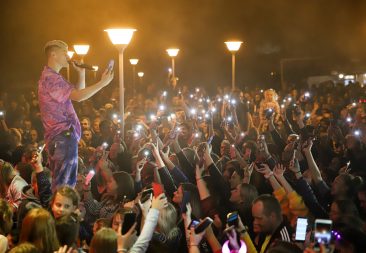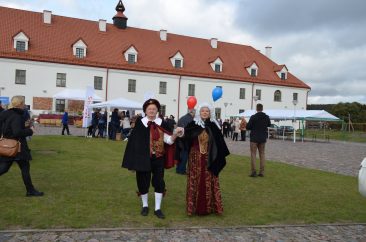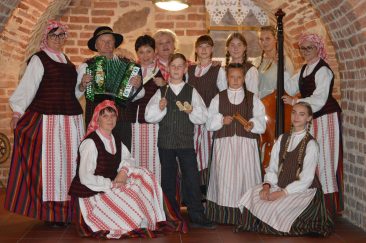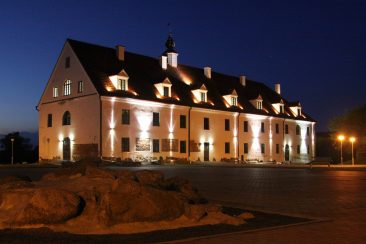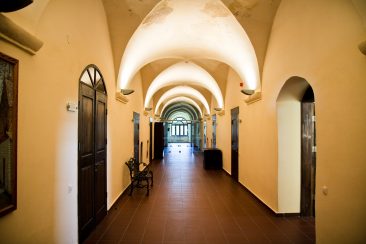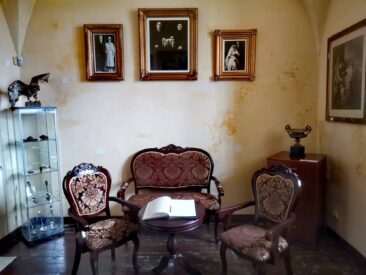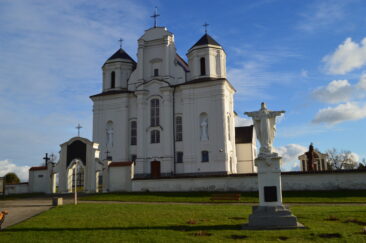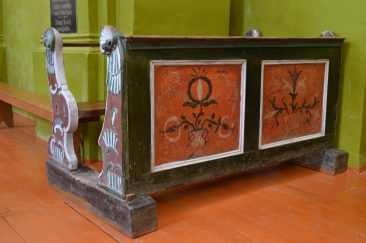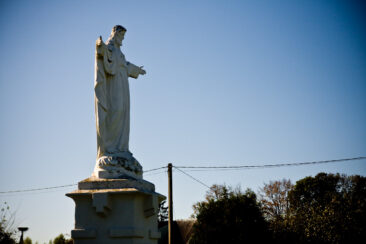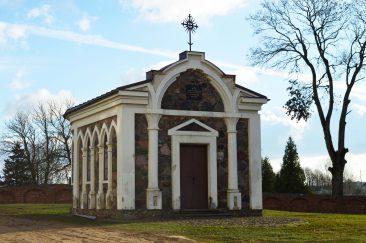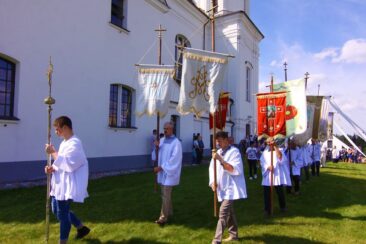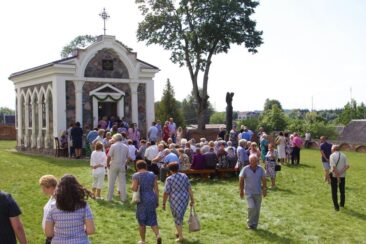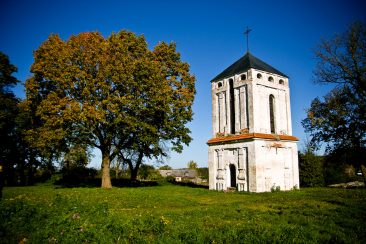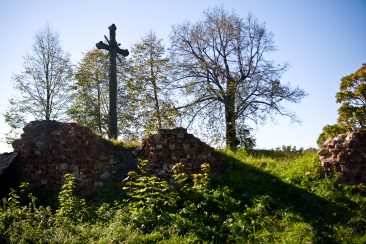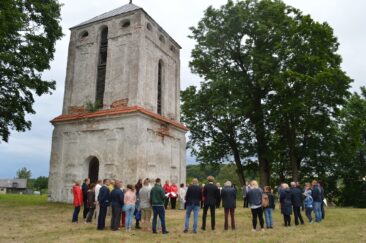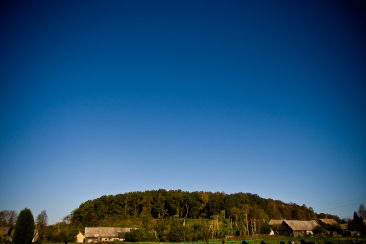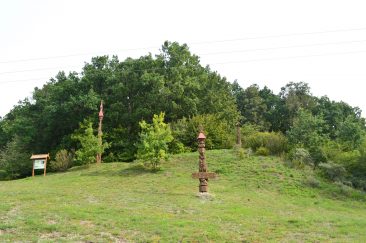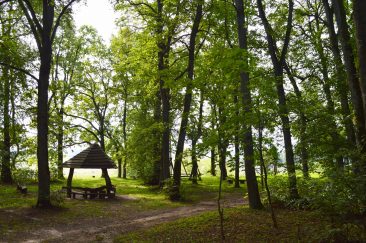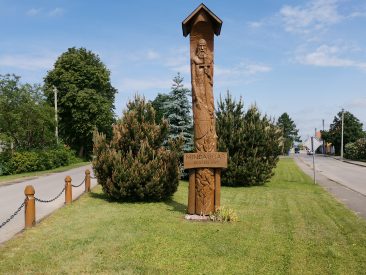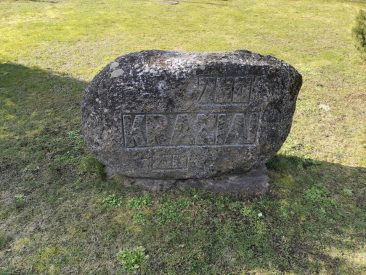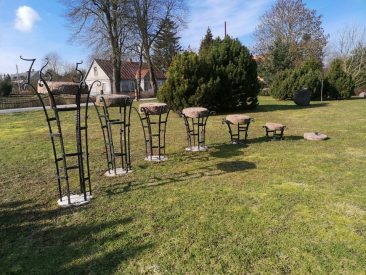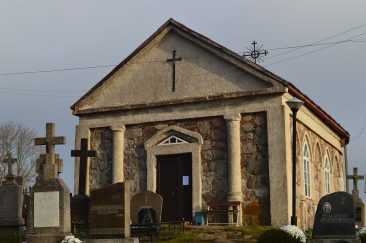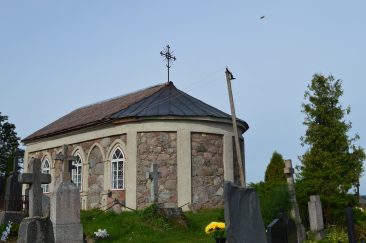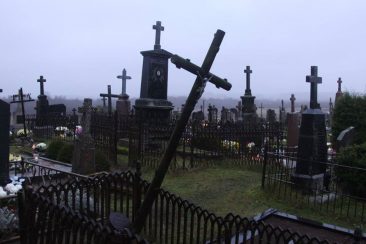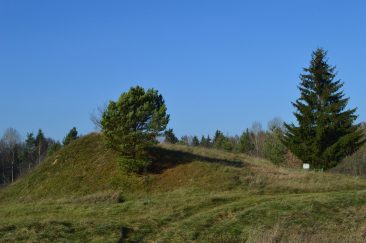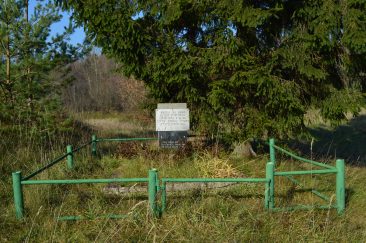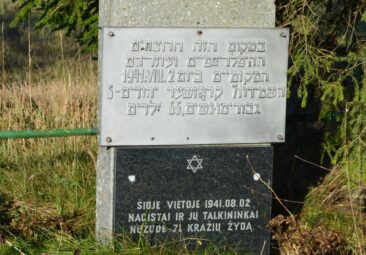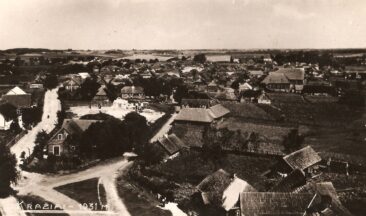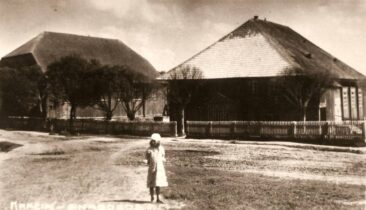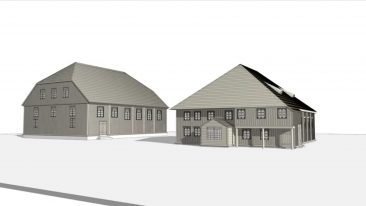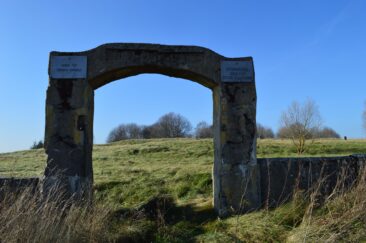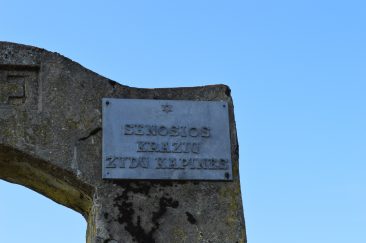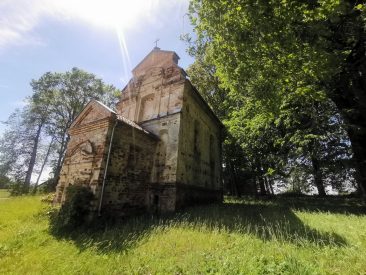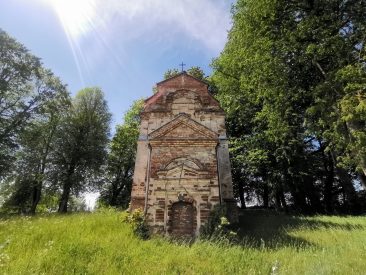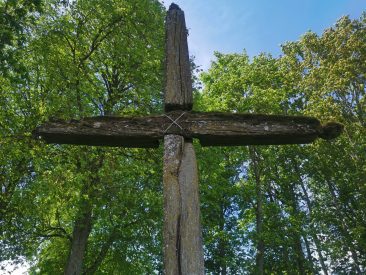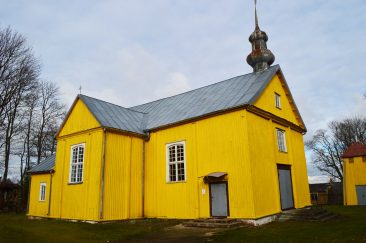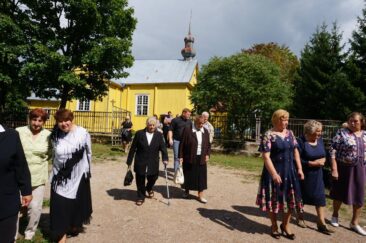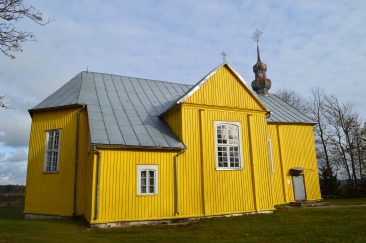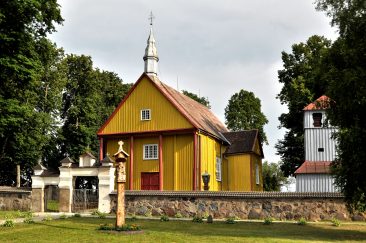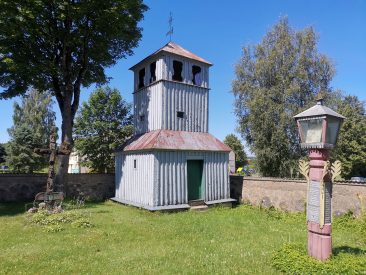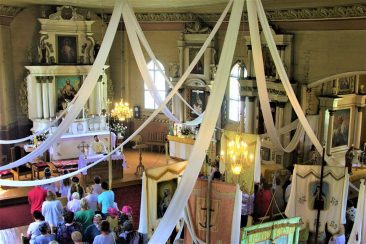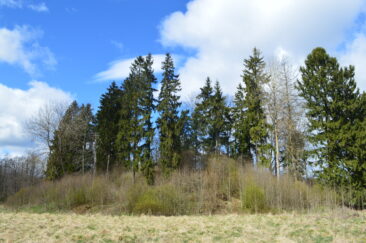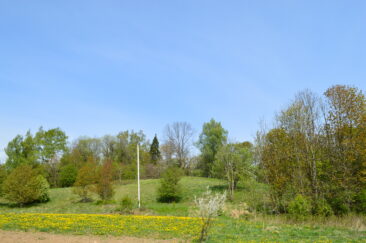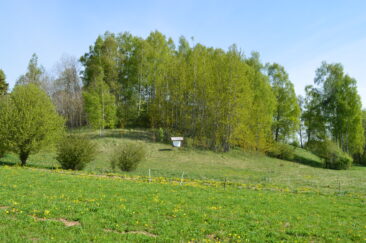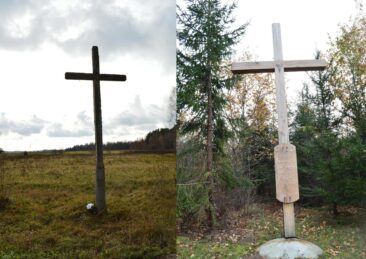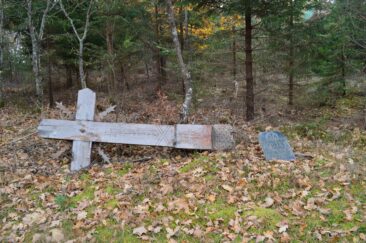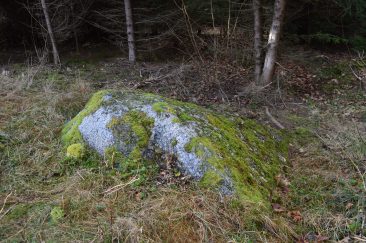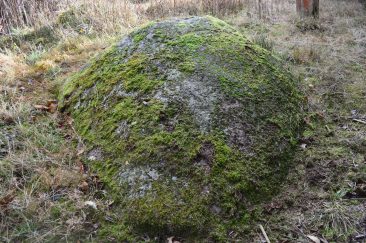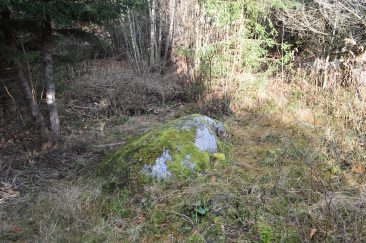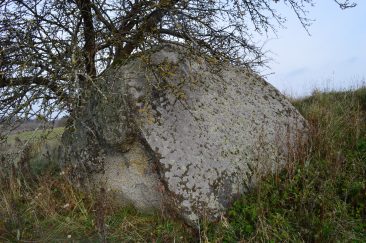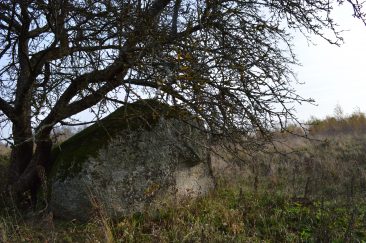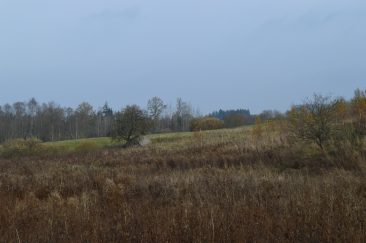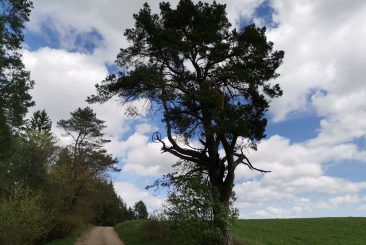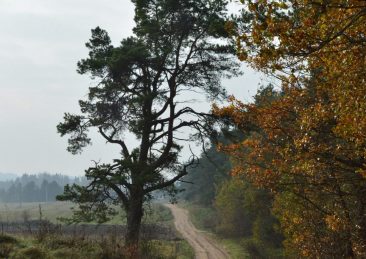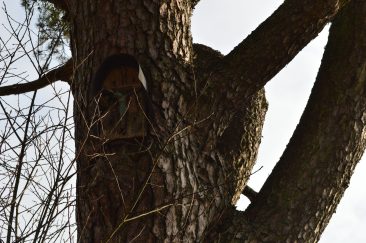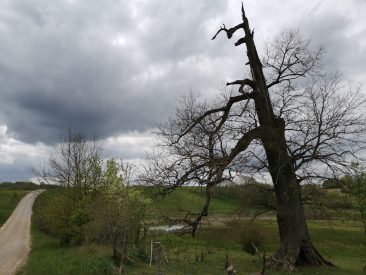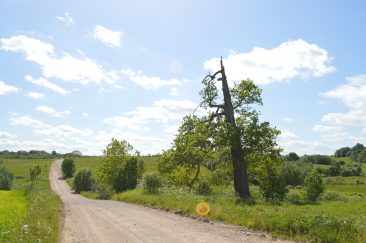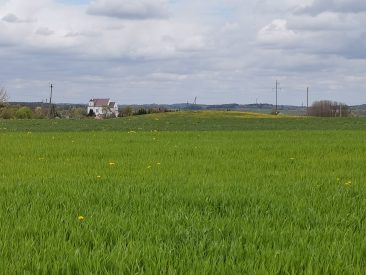Kražiai is a small town in the territory of Kelmė municipality area, along the road Kelmė-Varniai – 16 kilometres to the west of Kelmė. Kražiai was first mentioned in Mindaugas’ document in 1253 as Crase. Kražiai town is situated on both sides of the Kražantė river, and the old part of the town is preserved as the heritage of urban culture. From the earliest times Kražiai monasteries and churches had a special significance not only for Samogitia, but also for the whole Lithuania’s cultural and spiritual life.
The history of Kražiai in the 21st century is formed by traditional Kražiai festival, camps, artists residences and plein-airs. In the summer, various singers, composers, photographers, painters, art lovers and other interesting people come here. Kražiai attracts creative and famous personalities and all those who want to come back to their roots.
Kražiai is one of Lithuania’s small towns, which have a lot of to cherish, enjoy and be proud of. The town boasts a rich history, active cultural life and cultural heritage sites.
THE JESUIT COLLEGE OF KRAŽIAI
In 1608, the Jesuits came to Kražiai. In 1614, Jonas Karolis Chodkevičius donated 7 villages for the future Kražiai College. In 1615, the owner of Kražiai, Mikalojus Kristupas Radvila Našlaitėlis donated a residential castle and some land in the town to the Jesuits. 22 buildings of various purposes were built in around 4 hectares: a monastery-college building (3 corps), a church, a school, farm buildings, a brick mill, a brewery, etc.
Only the south section of the former College ensemble has remained until today. The Jesuit College, founded in 1616, was the most important center of educational and religious life of Samogitia in the 17th-18th centuries. The Jesuit church, which foundations stones remain here until today, was built in 1621-1689, and it was the most ornate church in the whole Samogitia.
After the elimination of the Jesuit order in 1773, the buildings were desolated, as they had many owners. In 2008, the cultural center of Motiejus Kazimieras Sarbievijus was established here.
3D reconstruction of the former Jesuit College complex:
https://www.youtube.com/watch?v=gPJBkEDWJL4
THE ST VIRGIN MARY IMMACULATE CONCEPTION CHURCH IN KRAŽIAI
The Benedictine Convent in Kražiai was funded by Krizostomas Valadkevičius in 1639 and a wooden convent with the church was built there. Between 1757 and 1763 a stone church of the late Baroque style was built by the nuns. The architect of this project was the Jesuit architect Tomas Žebrauskas.
The St Virgin Mary Immaculate Conception Church in Kražiai is known in Lithuania and Europe as the Catholic and Lithuanian Defense symbol. In 1891, the Tsarist government closed the monastery and planned to demolish the church. The faithful people guarded the church day and night, not allowing it to be closed. In November 23, in 1893, the Tsarist gendarmes and Cossacks tried to deal people with violence. This historic event is known as the Kražiai Massacre.
The stone church, the churchyard fence, and the chapel of St Rokas has remained until today.
ST. ROKAS CHAPEL
St. Rokas Chapel was built in the first half of 19th century. In 2001, the chapel was restored. During the restoration of the burial crypt, the remains of 9 coffins, and burial tables with surnames were found. These days you can find Crucifixion sculpture of the 17th century hanging in the altar part in the chapel.
From the 18th century the St Rokas feast has become the biggest festival of the parish and nowadays it brings crowds of people to annual celebrations.
THE HILL OF VYTAUTAS
According to historians and archaeologists, there were an old settlement at the foot of this hill 4 000 years ago. Here, the Great Duke Vytautas ordered to build one of the first Christian temples in Samogitia.
In 1416, The Parochial Church of St Archangel Michael in Kražiai was built. The pastors and altarists of Kražiai had the number of famous personalities: V. Protasevičius, P. Roizijus, M. Daukša, M. E. Geišas, D. Mankauskas, etc.
The wooden church was rebuilt five times, as frequent fires destroyed it. However, after the fire of June 25th, in 1941, the wooden church burned to the ground and was not rebuilt.
Today, a brick belfry built around 1852 from the walls of the collapsing Jesuit church still stands here. And an oak cross was built in 1989 on the site of the former Parochial Church where the foundations still remain.
3D reconstruction of the first Kražiai parish church:
https://www.youtube.com/watch?v=SRBYniQtUpw
MEDŽIOKALNIS
Botanical resort with beautiful landscape. A lot of legends, stories have reached our days about Medžiokalnis. The stories include the holy oak and holy water, which comes from under its roots, sacred fire and a statue of the goddess Medeinė. There was also a menagerie on the Medžiokalnis. Dukes Kęsgailos, Radvilos, Chodkevičiai hunted and rested here as well as Grand Duke Žygimantas Augustas. Medžiokalnis natural beauty inspired the famous European baroque poet Matthew Casimir Sarbievius.
MINDAUGAS SQUARE
Until 2003, in this place Kražiai cultural house was standing. Now there is beautiful green territory with symbolical monuments for the Kražiai 750, 760 and 765 year anniversaries.
THE CHAPEL OF KRAŽIAI CEMETERY
The cemetery in Kražiai is formed two ways – the old cemetery (fenced with the stone wall) and the new cemetery (fenced with metallic fence). In the middle of the old cemetery in the highest place a stone chapel is standing. It was built in 1857 by the dean V. Butavičius. The Chapel is square formed with cellars. It was a mausoleum of the landlords Šiukštos and Pšeciševskiai families. In the 20st century the Chapel decayed, the coffins of the landlords were robbed. In 1991 the Chapel was restored with donated money.
THE JEWISH EXECUTION SITE
The massacre of Kražiai Jews took place in 1941, in July-August. They were held in two places: in the Kupre forest and near Medžiokalnis.
During the execution organized by the Nazi German government in 1941, in August, 71 Jews (men, women, children) of the Kražiai Jewish community were killed and buried here near Medžiokalnis. A historian St. Buchaveckas called it the „murder of the Jewish children“.
The inscription remains on the monument today: „In this place on August 2, 1941, the Nazis and their helpers killed 71 Kražiai Jews“. The Hebrew inscription states that 71 Kražiai Jews were killed: 6 men and women, 65 children.
After 1941 there were about 20 people left from the Jewish community in Kražiai district – they hid in Lithuania or managed to retreat to the depths of the USSR in time.
THE SYNAGOGUES IN KRAŽIAI
Until the 20th century in Kražiai, as in the other Lithuanian towns, the large Jewish community lived.
Until 1941, the Jewish people in Kražiai had two synagogues – the winter one and the summer one – and the other national organisations.
In 1941, on June 22nd, with the outbreak of the German-Soviet war, the Nazi army reached Kražiai and occupied the town on June 25th. Then the Soviet artillery began firing on the town and set it on fire. The 90 percent of the town’s buildings burned including a wooden church on the Vytautas Hill, a school, a power-station, a mill, a bridge and both synagogues.
3D reconstruction of synagogues in Kražiai:
https://www.youtube.com/watch?v=HPx2Dr_-79k
THE OLD JEWISH CEMETERY OF KRAŽIAI
Until the middle of the 20th century, Kražiai was home to the large Jewish community. Here, near the town of Kražiai, the Jews had their own cemetery on the area of 2,5 ha.
There were about 80 hewn field stone and concrete tombstones in various sizes and shapes with the Hebrew inscriptions. The small part of tombstones, fences and fragments of gates have survived.
It is known that the Rabbi of Kražiai – Rabbi zev Wolf Turbowitz (1840-1922) – was buried in the old Jewish cemetery.
LINKAUČIAI CHAPEL
In the parish of Kražiai stands the stone Linkaučiai Chapel dating from the Renaissance period. This Chapel was built after 1657 and has preserved its primal look. Near the Chapel was fenced a considerable churchyard, where people were burried. The owners of Linkaučiai were burried in the cellar of Chapel.
ST. GEORGE CHURCH IN PAŠILĖ
According to historical evidence, the Catholic Church was already in existence in Pašilė by the middle of the 15th century. The surviving archival sources take the form of documents from the 19th and 20th century. In the inventory of 1801 it was pointed out that Pašilė Church was wooden and small, and built on a stone foundation in 1781 as a concern of the local landlord Jurgis Jucevičius, who confirmed the foundation in 1788. The Pašilė Church had severely decayed by the middle of the 19th century. In the visitation report of 1883 mention is made that a new church is being built in Pašilė under the diligence of the priest Justinas Davidovičius and his parish. This church has survived until today; it has a Latin cruciform plan, two chapels and a small low tower with an ornamental cross that rises above the main facade.
ST. BARTHOLOMEW THE APOSTLE CHURCH IN KARKLĖNAI
Ignas Šiukšta built a church in Karklėnai in 1767, wchich was an altaria of the Kražiai Jesuit Monastery. This church became a filial of Pašilė parish after the Jesuit Order was eliminated in 1773. Karklėnai Church was rebuilt between 1779 and 1791 and consecrated in 1792. It had five altars: a high altar dedicated to St. Bartholomew, side altars dedicated to the Mother of God and St. Ann, and two dedicated to Christ. The contemporary church, the third to be constructed there, was built in 1871. It had a Latin cross plan, one nave and was insular, utilizing the forms of folk classicism. The elements of the buildings interrior are witness to the rich and long history of this church; there are art monuments from the 18th century and the first half of the 20th century.
HILL FORTS
There are 5 hill forts in Kražiai subdistrict: Galiniai (Papušys/Pilikė), Paspąstis (Sponstis/Maldokalnis), Piltinė (Bukantiškė), Šilgalis (Pilikė), Karklėnaliai (Biržkalnis).
MONUMENTS FOR PARTISANS
There are several monuments to commemorate the partisans of Kražiai subdistrict.
A STONE WITH „GOD’S FOOT“
A mythological stone, reminiscent of the God’s foot mark, in Pašilė.
ORELIŠKĖ STONE
Natural monument of the state value in Kražiai area.
KRAŽIAI PINE
In the edge of Kražiai town a hundred years old pine is growing. Local people also call it the pine of blackcocks. In it’s trunk the crucifix is hanging.
GREITIŠKĖ OAK
Natural monument of the state value in Kražiai area. Greitiškė was a village near Kražiai. Now the village is disappeared and the only oak remembering these times is growing.


